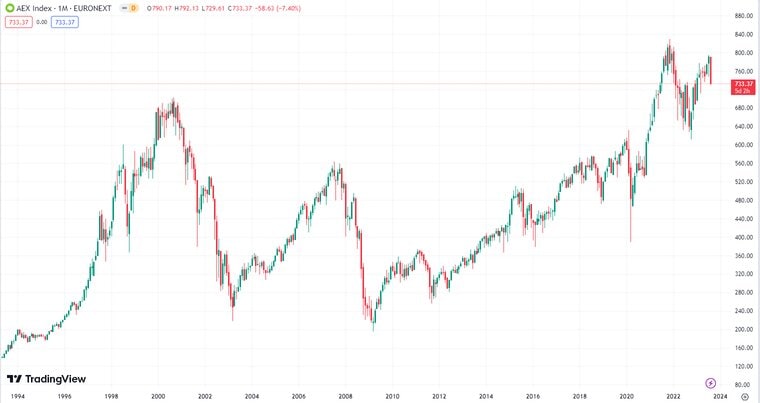The China Factor: Analyzing The Struggles Of BMW, Porsche, And Other Auto Brands

Table of Contents
Intense Domestic Competition
The rise of powerful domestic Chinese automakers is a primary driver behind the challenges faced by international brands. This intense competition manifests in two key areas:
Rise of Chinese Automakers
The rapid ascent of brands like BYD, NIO, and Xpeng is reshaping the Chinese automotive landscape. These companies possess several key advantages:
- Superior Understanding of Local Consumer Preferences: Chinese brands intimately understand the nuances of the local market, from design preferences to preferred features and marketing channels.
- Aggressive Pricing Strategies: They often offer highly competitive pricing, undercutting established international brands.
- Rapid Technological Innovation: Chinese automakers are leading the charge in electric vehicles (EVs), autonomous driving features, and other cutting-edge technologies. This technological prowess is a major draw for Chinese consumers.
- Strong Government Support: Government initiatives and subsidies actively promote the growth of domestic automakers, providing a significant advantage in the market.
This potent combination allows Chinese brands to aggressively capture market share, leaving international players struggling to keep pace.
Price Wars and Pressure on Margins
The fierce competition forces international brands into price wars, squeezing profit margins significantly.
- Price Sensitivity: Chinese consumers are highly price-sensitive, making it difficult for foreign automakers to maintain premium pricing strategies.
- Adapting Pricing Strategies: International brands are forced to adapt their pricing models, often lowering prices to stay competitive, impacting their overall profitability.
- Impact on ROI: The pressure on margins directly affects return on investment (ROI), making it increasingly challenging for foreign companies to justify investments in the Chinese market.
This relentless price pressure is a major contributor to the struggles faced by international brands in China.
Navigating Regulatory Hurdles and Tariffs
The regulatory environment in China presents significant challenges for foreign automakers, adding complexity and costs to operations.
Complex Regulatory Environment
China's automotive regulations are constantly evolving, creating a complex and dynamic regulatory landscape.
- Stringent Emission Standards: China is a global leader in implementing stringent emission standards, demanding significant investments in cleaner vehicle technologies.
- Complex Import/Export Regulations: The import and export processes are often complex and bureaucratic, increasing lead times and administrative costs.
- Safety Testing Requirements: Rigorous safety testing requirements add to the overall cost and complexity of bringing vehicles to market.
- Bureaucratic Procedures: Navigating the bureaucratic processes associated with regulatory compliance can be time-consuming and resource-intensive.
These regulations add considerable overhead for international companies.
Trade Tensions and Tariffs
Geopolitical tensions and trade disputes can significantly impact the automotive industry in China.
- Impact of Tariffs on Vehicle Pricing: Tariffs imposed on imported vehicles directly increase the final price, making them less competitive.
- Potential for Supply Chain Disruptions: Trade disputes can disrupt supply chains, leading to delays and shortages of essential components.
- Long-Term Uncertainty: The unpredictable nature of geopolitical relations creates long-term uncertainty, making it difficult for companies to plan effectively.
This uncertainty adds another layer of complexity to operating in the Chinese market.
Understanding Unique Chinese Consumer Preferences
Success in the Chinese market hinges on understanding the unique preferences and demands of Chinese consumers.
Brand Loyalty and Perception
Building brand trust and loyalty requires a nuanced approach.
- Localized Marketing Strategies: Marketing campaigns must be carefully tailored to resonate with the local culture and consumer preferences.
- Adapting Product Features: Vehicles must be adapted to meet specific needs and preferences of the Chinese market.
- Building Strong Relationships: Cultivating strong relationships with Chinese consumers is crucial for long-term success.
Ignoring cultural nuances can lead to significant marketing failures.
Technological Demands and Features
Chinese consumers are highly tech-savvy and demand advanced technology in their vehicles.
- Cutting-Edge Technology: Integrating cutting-edge technology is essential for attracting and retaining customers.
- Connectivity: Seamless connectivity features are highly valued.
- Autonomous Driving Features: Autonomous driving capabilities are increasingly becoming a key selling point.
- Digital Services: Integration of digital services and infotainment systems is critical.
Failing to meet these high technological expectations can quickly lead to losing market share.
Supply Chain Challenges and Logistics
The global nature of automotive supply chains makes foreign brands susceptible to various disruptions.
Global Supply Chain Disruptions
Various factors can disrupt the supply chain:
- Geopolitical Instability: Political instability in various regions can impact component sourcing and logistics.
- Component Shortages: Shortages of crucial components can halt production and disrupt deliveries.
- Logistical Bottlenecks: Logistical bottlenecks, such as port congestion, can delay shipments.
- Increasing Transportation Costs: Rising fuel prices and other transportation costs add to the overall cost of doing business.
These disruptions can significantly impact production and profitability.
Localization Strategies
Mitigating supply chain risks often requires localization strategies:
- Balancing Cost and Efficiency: Establishing local manufacturing facilities requires a careful balance between cost and efficiency.
- Building Strong Relationships with Local Suppliers: Developing strong relationships with local suppliers is crucial for securing reliable component sourcing.
- Managing Quality Control: Maintaining quality control standards across a localized supply chain requires robust processes.
Investing in local manufacturing can reduce reliance on global supply chains, but it also necessitates significant investment.
Conclusion
The "China factor" presents formidable challenges for international auto brands. Successfully navigating this complex market requires a multifaceted approach: understanding consumer preferences, adapting to regulatory changes, addressing intense competition, and managing a globalized supply chain effectively. Ignoring these factors can lead to significant market share erosion and financial losses. To thrive, automakers must prioritize localization strategies, technological innovation, and a deep understanding of the unique intricacies of the Chinese automotive market. Learn more about overcoming the challenges of the China factor and developing a successful strategy for this critical market. The future of your brand in the global automotive landscape may depend on it.

Featured Posts
-
 Analyzing The Net Asset Value Of Amundi Msci World Ii Ucits Etf Usd Hedged Distribution
May 24, 2025
Analyzing The Net Asset Value Of Amundi Msci World Ii Ucits Etf Usd Hedged Distribution
May 24, 2025 -
 M And S Announces 300 Million Cost From Major Cyberattack
May 24, 2025
M And S Announces 300 Million Cost From Major Cyberattack
May 24, 2025 -
 En Zeki Burclar Akil Zeka Ve Basarida Oende Olanlar
May 24, 2025
En Zeki Burclar Akil Zeka Ve Basarida Oende Olanlar
May 24, 2025 -
 Aex Index Wint Terrein Terwijl Amerikaanse Beurs Daalt
May 24, 2025
Aex Index Wint Terrein Terwijl Amerikaanse Beurs Daalt
May 24, 2025 -
 Real Estate Fallout La Fires And The Accusation Of Landlord Price Gouging
May 24, 2025
Real Estate Fallout La Fires And The Accusation Of Landlord Price Gouging
May 24, 2025
Latest Posts
-
 Kermit The Frog Commencement Speaker At University Of Maryland In 2025
May 24, 2025
Kermit The Frog Commencement Speaker At University Of Maryland In 2025
May 24, 2025 -
 Maryland University Selects Kermit The Frog For 2025 Commencement
May 24, 2025
Maryland University Selects Kermit The Frog For 2025 Commencement
May 24, 2025 -
 Kazakhstan Stuns Australia In Billie Jean King Cup Playoff
May 24, 2025
Kazakhstan Stuns Australia In Billie Jean King Cup Playoff
May 24, 2025 -
 Rezultat Matcha Aleksandrova Samsonova Na Turnire V Shtutgarte
May 24, 2025
Rezultat Matcha Aleksandrova Samsonova Na Turnire V Shtutgarte
May 24, 2025 -
 Aleksandrova Vs Samsonova Shtutgartskiy Turnir Perviy Krug
May 24, 2025
Aleksandrova Vs Samsonova Shtutgartskiy Turnir Perviy Krug
May 24, 2025
